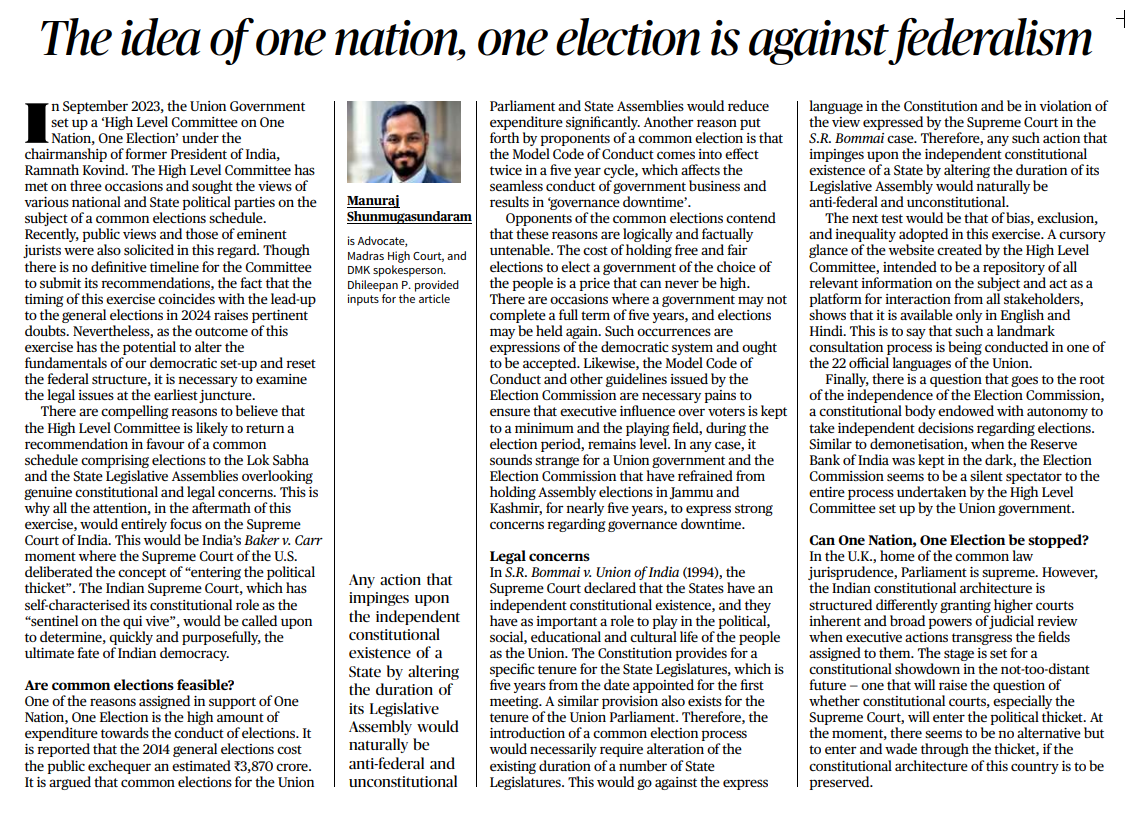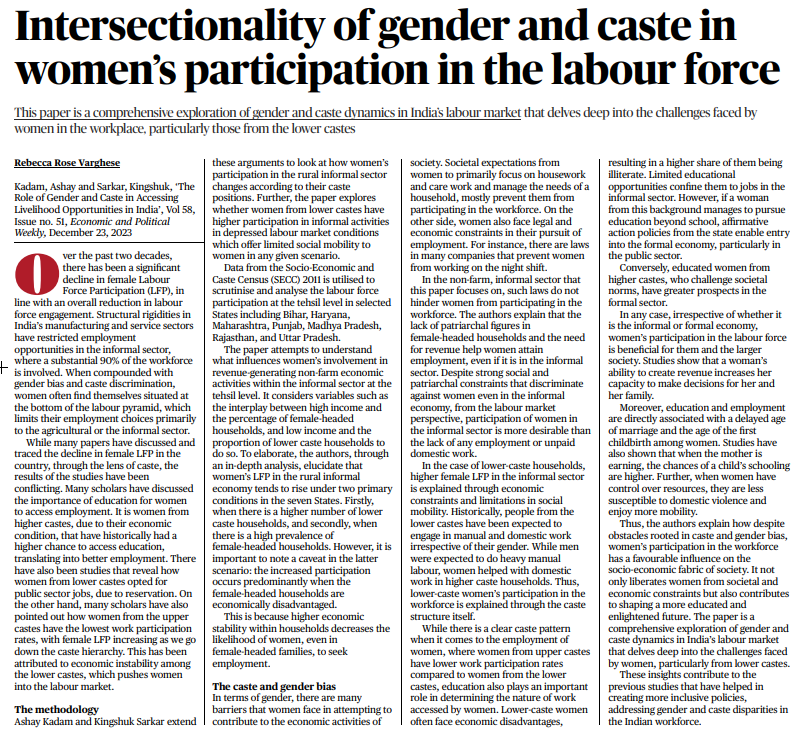Introduction:
The last decade has witnessed a significant accomplishment by the government in India through the Pradhan Mantri Jan Dhan Yojana (PMJDY), leading to substantial strides in financial inclusion. This success is attributed to the integration of Aadhaar and mobile technology, forming the JAM Trinity.
Financial Inclusion Statistics:
– The PMJDY has propelled financial inclusion from 25% in 2008 to over 80% among adults within six years.
– Villages exhibit near-universal banking service coverage, with 99.7% having access to banking outlets as of July 2023.
– Notable digital transaction increases highlight the growing adoption of digital finance.
III. Impact on Women and Rural Populations:
– Around 56% of Jan-Dhan account holders are female, emphasizing the scheme’s positive impact on women.
– Approximately 67% of accounts are opened in rural and semi-urban areas, addressing financial inclusion in these regions.
Direct Benefit Transfer System:
– The Direct Benefit Transfer system incentivizes the population to open bank accounts, ensuring direct crediting of subsidies and benefits.
Additional Financial Inclusion Initiatives:
– Efforts include priority sector lending, MUDRA Yojana for MSMEs, and interest subvention schemes, targeting various strata of the population.
– Pradhan Mantri Street Vendor’s AtmaNirbhar Nidhi (PM SVANidhi) enhances financial inclusion during crises.
PM SVANidhi and Jan Dhan Yojana Synergy:
– PM SVANidhi complements Jan Dhan Yojana, creating a paradigm shift in formalized credit.
– Study by Aggarwal et al. reveals behavioral shifts towards digital transactions and increased consumption spending.
Financial Inclusion Index:
– RBI’s Multi-dimensional Financial Inclusion (FI) index, considering 97 indicators, shows substantial progress.
– FI-Index for March 2023 stands at 60.1, indicating advancements in accessibility, usage, and efficiency of financial services.
Regional Disparities and the Law of Diminishing Returns:
– States with lower initial financial inclusion, such as Assam, Bihar, Chhattisgarh, and Jharkhand, show substantial growth.
– States with higher initial financial inclusion, like Maharashtra, Tamil Nadu, and Andhra Pradesh, exhibit less growth, indicating the law of diminishing returns.
– States positioned towards the middle and lower levels, like Uttar Pradesh, Madhya Pradesh, and Rajasthan, require additional efforts.
Comprehensive Strategy for Future Financial Inclusion:
– Overcoming geographical and social barriers is crucial.
– A comprehensive strategy, addressing diverse needs, understanding financial behaviors, and tailoring products to unique circumstances, is essential for furthering financial inclusion in India.
Introduction:
- In September 2023, the Union Government established the ‘High Level Committee on One Nation, One Election’ under the chairmanship of former President Ramnath Kovind.
- This committee, formed amid the lead-up to the 2024 general elections, has sparked concerns about its potential impact on India’s democratic structure.
- Committee’s Activities:
- The High Level Committee has convened three times, seeking input from national and State political parties, as well as the public and eminent jurists.
- Despite the absence of a definitive timeline for the Committee’s recommendations, the proximity to the 2024 elections raises suspicions about its intentions.
Potential Alteration of Democratic Setup:
The outcome of this committee has the potential to reshape India’s democratic framework. A comparison is drawn to the landmark Baker v. Carr case in the U.S., emphasizing the pivotal role the Indian Supreme Court may play in determining the fate of Indian democracy.
Feasibility of Common Elections:
- Proponents argue that common elections for the Union Parliament and State Assemblies could significantly reduce election-related expenses and address issues related to the Model Code of Conduct.
- Opponents, however, counter that such reasons are untenable, emphasizing the intrinsic value of the electoral process and the necessity of adhering to democratic norms.
Legal Concerns:
- Reference is made to the R. Bommai case, where the Supreme Court asserted the independent constitutional existence of States.
- Altering the election process could infringe upon the Constitution, especially regarding the fixed tenure of State Legislatures.
- Additionally, concerns are raised about bias and exclusion in the consultation process, conducted primarily in English and Hindi.
Independence of Election Commission:
- Analogies are drawn between the current situation and demonetization, emphasizing the Election Commission’s seemingly passive role in the Committee’s proceedings.
- Questions are raised about the potential impact on the Election Commission’s autonomy and independence.
Possibility of Intervention:
The editorial suggests that a constitutional showdown is imminent, questioning whether the constitutional courts, particularly the Supreme Court, will enter the “political thicket” to preserve the constitutional architecture of the country.
Conclusion:
As the debate over ‘One Nation, One Election’ unfolds, the legal, constitutional, and democratic implications become increasingly significant. The editorial implies a potential constitutional crisis, urging a careful examination of the legal issues surrounding the Committee’s recommendations and their potential impact on India’s democratic structure.
Introduction
Over the past two decades, India has witnessed a noteworthy decline in female Labour Force Participation (LFP), mirroring an overall reduction in labor force engagement.
Structural rigidities in manufacturing and service sectors, coupled with gender bias and caste discrimination, confine women to the bottom of the labor pyramid, limiting employment choices to agriculture or the informal sector.
Study Focus and Methodology
- The study by Ashay Kadam and Kingshuk Sarkar explores the relationship between women’s caste positions and their participation in the rural informal sector.
- Utilizing data from the Socio-Economic and Caste Census (SECC) 2011, the paper scrutinizes labor force participation at the tehsil level in selected states, aiming to understand the factors influencing women’s involvement in revenue-generating non-farm economic activities within the informal sector.
Key Findings
- Caste and Female LFP in Rural Informal Economy:
- Women’s LFP tends to rise under two primary conditions: a higher number of lower-caste households and a high prevalence of female-headed households.
- Increased participation occurs predominantly when economically disadvantaged female-headed households are considered.
- Gender Barriers and Economic Constraints:
- Societal expectations, legal constraints, and economic limitations impede women’s contribution to economic activities.
- Lack of patriarchal figures in female-headed households and the need for revenue drive women to seek employment in the informal sector.
- Caste, Education, and Work Access:
- Education plays a pivotal role in determining the nature of work accessed by women.
- Lower-caste women, facing economic disadvantages and limited educational opportunities, are often confined to the informal sector.
- Affirmative action policies facilitate entry into the formal economy for educated lower-caste women.
Benefits of Female LFP
- Women’s participation in the labor force, be it in the informal or formal economy, yields societal benefits.
- Studies show that women’s ability to create revenue enhances decision-making capacity for themselves and their families.
- Education and employment correlate with delayed age of marriage and first childbirth, higher chances of a child’s schooling, reduced susceptibility to domestic violence, and increased mobility for women.
Conclusion
Despite caste and gender biases, women’s participation in the workforce positively influences the socio-economic fabric of society, liberating them from constraints and contributing to a more educated and enlightened future.
The paper provides comprehensive insights into gender and caste dynamics in India’s labor market, offering valuable inputs for crafting inclusive policies to address disparities in the workforce.




